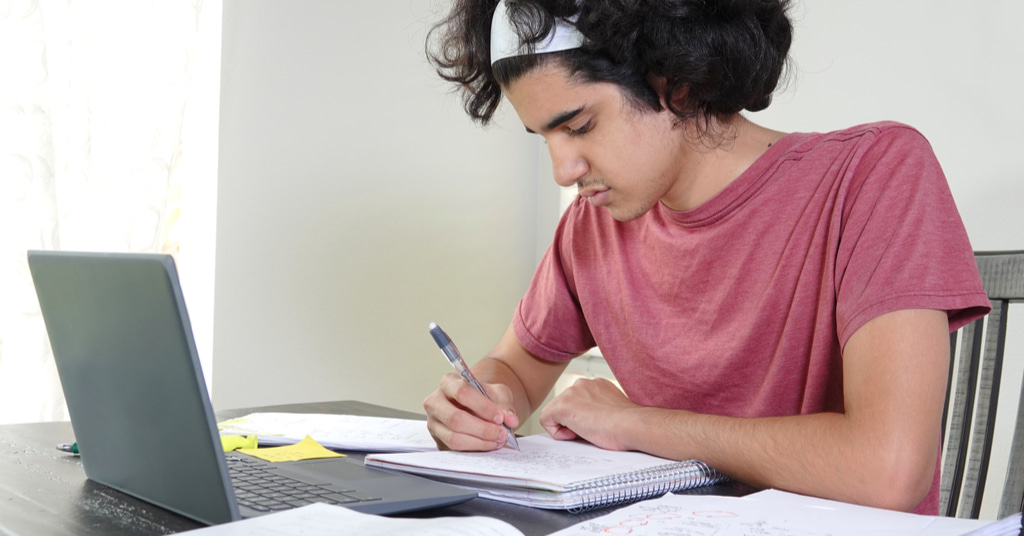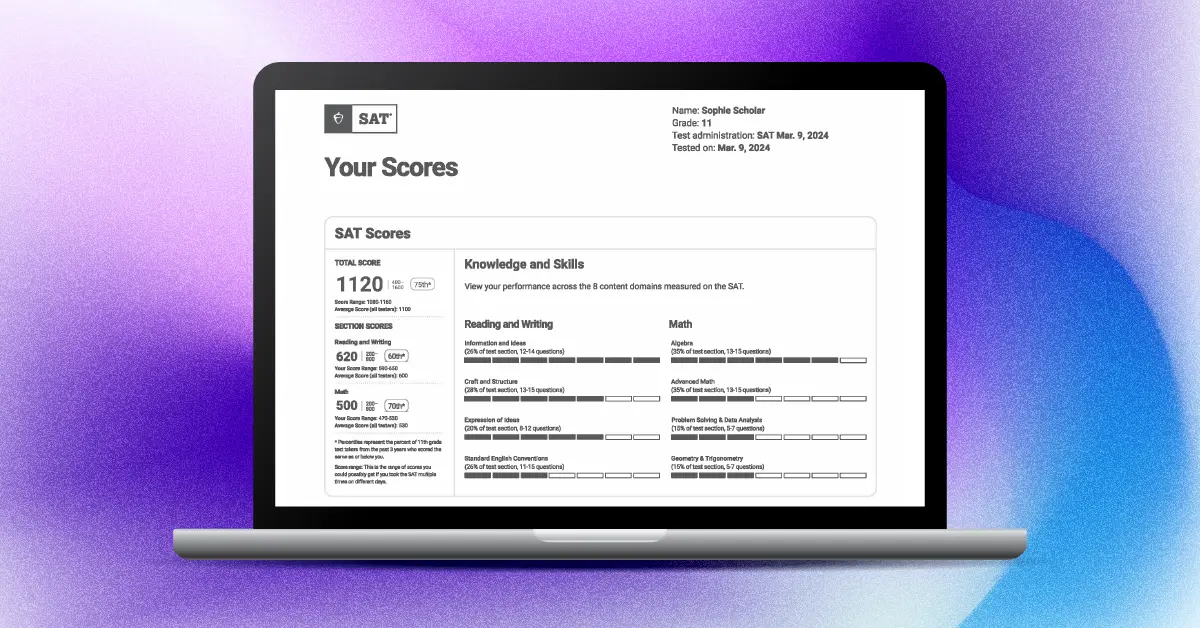Important SAT Update: Transition to Digital SAT
Effective December 3, 2023, the traditional paper-and-pencil format of the SAT has been discontinued. Starting in 2024, all students are required to take the Digital SAT, ushering in substantial changes in duration, format, material coverage, and question types. This shift to the Digital SAT represents a departure from traditional testing methods. It is crucial for students, educators, and test-takers to acquaint themselves with the new examination structure. Read more about the Digital SAT here.
Homeschooled students looking to take the SAT® exam may not know where to start. You should know that the College Board® has outlined a process for students who are not enrolled in traditional high schools. Homeschooled students are able to register following a process that is very similar to everyone else.
We have also outlined some tips for your study plans and prep work that can make a big difference in your performance. Here is a breakdown of some of the details that can help you out, from signing up for the test to arriving on test day.
Registration Tips
Homeschooled students are able to register to take the SAT exam either online or through the mail. In order to do so, you will need to select a test date that allows enough time for you to prepare for the exam, take the test, receive your results, and send your score report to prospective colleges and universities with your applications.
Once you have decided on a test date, the fastest way to sign up for the SAT test is online. You will need to make a College Board account where you will fill out the registration form with information that matches your ID.
You will use this same account when sending your SAT test score report to the colleges and universities you apply to. Once you have registered, you will be given the option to opt-in for the Student Search Service.
The College Board offers this service to help connect students to colleges and universities that match their academic goals. When registering online, you will also have to upload a photo of yourself that fits specific requirements. When your registration is complete, you need to print your Admission Ticket.
If you plan to register using a fee waiver, you can go to your local high school and speak to a counselor about your eligibility.
If you prefer to register by mail, you will need to go to your local high school to pick up a Student Registration Booklet. This booklet will include your registration form and a return envelope.
To complete your registration by mail, you will also need to include a photo of yourself, payment, and fee waiver card. You should know that not every test date is eligible for mail-in registration. Be sure to check online to ensure that you do not miss the postmark deadline when registering by mail.
The registration form will require a school code. Homeschooled students will all use the code “970000.”
Test Prep
After registration, the next step in preparing for the SAT exam is creating your study plan. Homeschooled students should know the SAT exam is built around standardized high school curricula and skills for success in college. The best long-term way to prepare for the SAT exam is by working hard academically.
Creating a study plan that is based on areas you can improve the most is a great way to ensure that you reach your maximum scoring potential. Start by taking a practice test. Your practice test should provide you with a score report.
You can use the score report to pinpoint weak performance areas. Focusing your time on question types, sections, and subsections that you struggle with, make silly mistakes on, or lack knowledge for is a great way to streamline your study plan. You can also find out if there are any gaps in your learning.
Once you have a strong understanding of your baseline performance after your first practice test, you can begin to drill down on those weaker questions. Find out why you’re answering them incorrectly.
Knowing whether you made a silly mistake, ran out of time, lacked knowledge about the topic, or used an overly complicated strategy for solving is really important. Digging deeper into why you falter on specific question types, sections, or subsections will allow you to learn from your mistakes.
Your prep work should also include practice in an environment that looks and feels similar to the official SAT test day center. If you have been homeschooled, it is possible that the setting in which you have learned throughout recent years is very different from the classroom setting that you will take the SAT exam in.
In order to be as prepared as possible, consider how your environment affects your performance. If your official SAT test day is the first day you have sat in a classroom amongst dozens of other students, there is a high potential that you will experience distractions you are not used to.
Many students fail to consider how noise from other students or comparisons about their timing or progress throughout the exam can impact their ability to focus and minimize stress throughout the SAT test.
If other students appear to be working faster than you, you should know that everyone works at their own pace, and if your pacing has been successful for you throughout your studies and practice exams, you have nothing to worry about. Still, it is a good idea to take some of your practice tests in settings that are similar to the SAT exam.
If you are a part of a study group, see if you can all get together (perhaps at a library) to take a practice exam at the same time. If you have only gotten practice and experience within the comfort and quiet of your home, then the first time you are faced with the distractions that come with a group or classroom setting have the potential to impact your performance significantly.
Your goals throughout your practice work should be working to understand your performance tendencies. You should have a strong expectation of how you will do on the official exam before walking into a classroom on test day.
If you lack experience studying or taking an exam in a group setting or in a classroom, consider how this might impact your stress levels, focus, and ability to perform. Like any other factor on the SAT exam, the setting is important, and realistic practice will be crucial in fine-tuning your skills and strategies.
You won’t be able to mimic the setting of an SAT exam completely. Still, you can dedicate some time throughout your preparation for the SAT exam towards practicing in an environment that is different from your home.
If you’re looking for a place to start with your SAT test studies, consider trying UWorld’s SAT Prep Course. The prep course offers realistic practice exams and thousands of sample questions and sample passages.
When using practice exams, the most important factor is that they are realistic to the style and level of difficulty that you will face on the official SAT exam. By using UWorld, you can ensure that your practice work is legitimate. We also offer performance tracking tools.
This nuanced look at your score report is useful when tracking improvements, finding weak points, and understanding the trends in your performance. A great way to stay on track throughout your studies is by evaluating your performance over time.
You can also use the detailed question explanations offered throughout the prep course to learn from your mistakes. The detailed question explanations are particularly helpful for more complicated concepts and questions.
Try the prep course out to ensure that you understand the areas you can improve and ultimately reach your full scoring potential.




